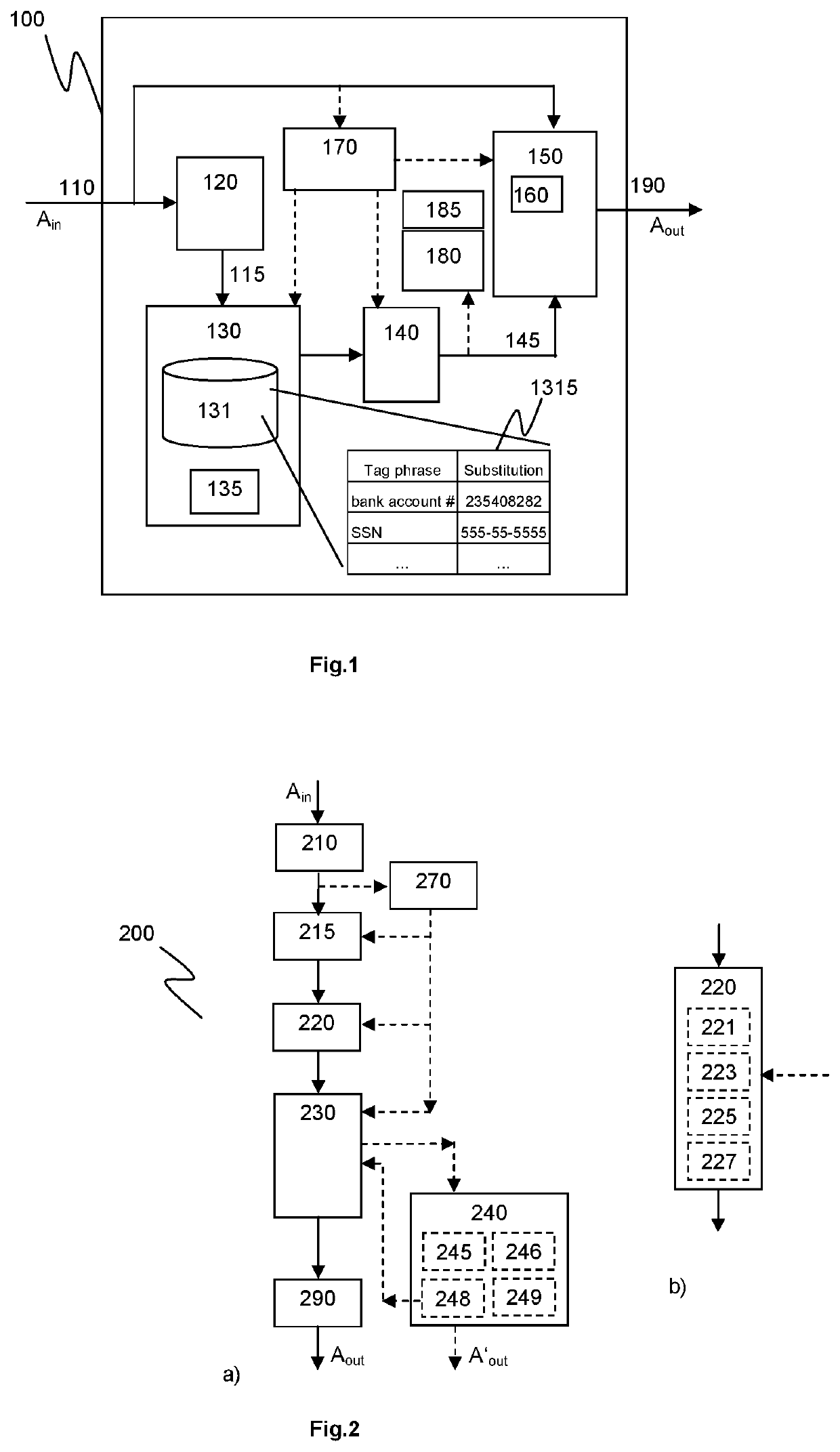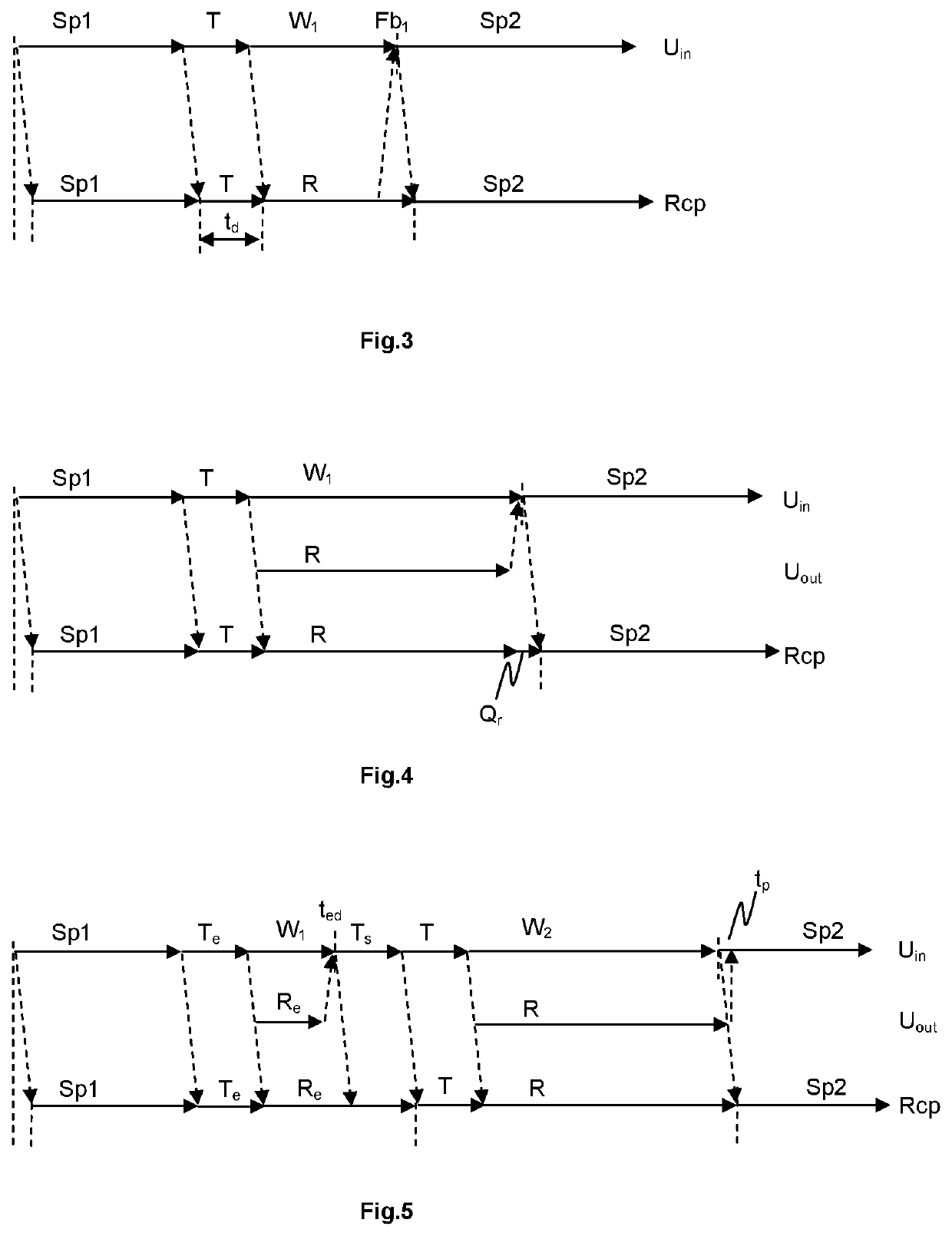Method for speech processing and speech processing device
a speech processing and speech technology, applied in the field of speech processing and speech processing devices, to achieve the effect of reducing user privacy concerns, convenient and user-friendly hands-free solution, and natural conversational flow
- Summary
- Abstract
- Description
- Claims
- Application Information
AI Technical Summary
Benefits of technology
Problems solved by technology
Method used
Image
Examples
first embodiment
[0035]FIG. 3 shows a timeline of speech processing, in a The upper line labelled Uin refers to speech input from the user while the lower line labelled Rcp represents output to the recipient (and potentially also back to the user, e.g. if the telephone replays his or her own voice to the user). While the user speaks, a first portion of speech Sp1 is transmitted with an inevitable little delay to the recipient, as usual. When the user utters the spoken delimiter or tag T, it is detected, as described above. In this example the tag T is also transmitted to the recipient. Immediately after the detection, a substitution audio sample R is determined, replayed and inserted in the voice data stream to obtain the substituted voice data stream. The latter is transmitted to the recipient, as shown on the lower timeline Rcp. In this example, the inserted audio sample is not replayed to the user, so that the user may have to guess when it is over and wait during this time W1. The user may get ...
second embodiment
[0036]FIG. 4 shows a timeline of speech processing in a Additionally, a third line Uout is depicted between the upper and the lower line, representing sound output back towards the user. In this example, the substitution audio sample R is also replayed to the user, so that the user may wait W1 listening and realize when the insertion is over. After a short reaction time, which may at the recipient result in a short period of silence Q1 after the substitution audio sample R, the user may continue talking. The subsequent portions of speech Sp2 are again transmitted without modification to the recipient. The user may also continue talking shortly before the replay of the substitution audio sample is over, so that the short period of silence Q1 after the substitution audio sample R is prevented and the conversational flow sounds even more natural for the recipient. However, the user should not continue talking too early, since in one embodiment the system might then interpret the subse...
third embodiment
[0039]FIG. 5 shows a timeline of speech processing with an error correction, in a After the user uttered a wrong tag Te (i.e. an existing but unintended tag), the corresponding erroneous substitution audio sample Re is determined, inserted and replayed. However, since the substitution audio sample Re is replayed to the user, he or she may interrupt the replay and insertion at ted by saying something, like e.g. “Stop”. In one embodiment, the user may say anything and the system will react immediately. In another embodiment, the system reacts only on certain predefined stop words, so that it needs some time Ts to detect a stop word. Consequently, the recipient may also hear at least a part of the replayed erroneous substitution audio sample Re. However, usually human recipients as well as machine recipients may realize that the substitution audio sample is not correct. After the interrupting speech portion Ts, the user may in this example immediately utter the correct intended tag T,...
PUM
 Login to View More
Login to View More Abstract
Description
Claims
Application Information
 Login to View More
Login to View More - R&D
- Intellectual Property
- Life Sciences
- Materials
- Tech Scout
- Unparalleled Data Quality
- Higher Quality Content
- 60% Fewer Hallucinations
Browse by: Latest US Patents, China's latest patents, Technical Efficacy Thesaurus, Application Domain, Technology Topic, Popular Technical Reports.
© 2025 PatSnap. All rights reserved.Legal|Privacy policy|Modern Slavery Act Transparency Statement|Sitemap|About US| Contact US: help@patsnap.com


